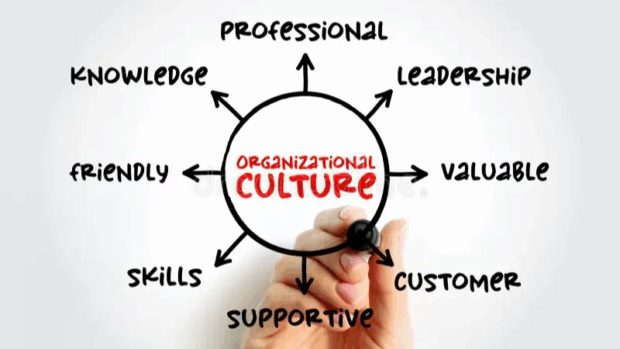Modern teams move fast. Markets shift overnight, expectations change, and internal pressure can rise quickly. A strong leadership culture is one of the few stabilizing forces that keep organizations focused, resilient, and able to adapt. A team with shared leadership habits will maintain high standards even when leaders rotate, processes evolve, or workloads intensify.
A strong leadership culture is created by setting shared behavioral standards, consistently modeling them from the top, rewarding leadership behavior at every level, and building systems that reinforce clarity, accountability, and continuous growth. Culture does not form from slogans or mission statements. It forms from daily actions, transparent communication, and leaders who show, through their behavior, exactly how the team should treat work, each other, and decision-making.
Why Leadership Culture Matters More Than Leadership Roles

Most companies still depend on individual leaders, even though the real advantage comes from leadership behavior spread across teams. When culture does the heavy lifting, any person can step up, make a good decision, unblock a process, or resolve a conflict without needing a title. That creates faster execution, higher trust, less micromanagement, and more ownership.
Teams with a strong leadership culture show three common traits:
- People know exactly what “good leadership” looks like in the organization.
- They are encouraged and trusted to act like leaders, even without formal authority.
- Systems, processes, and rituals support leadership behavior rather than suppress it.
This foundation is what companies use to grow sustainably, retain talent, avoid stagnation, and stay accountable.
Core Pillars of a Strong Leadership Culture

The following pillars are the backbone of leadership culture. Without them, leadership remains abstract or inconsistent.
1. Shared Standards for Behavior
Leadership culture begins with clearly defined expectations. Teams need to know what leadership actually means in their environment. Not general phrases, but observable behaviors.
2. Consistency From the Top
Senior leaders must demonstrate the exact behaviors they expect from others. Nothing kills culture faster than inconsistency.
3. Accountability That Feels Fair
People want to know that standards apply equally. Accountability strengthens culture only when it feels unbiased and clear.
4. Continuous Development
Strong cultures include structured learning. Leadership habits must be practiced, refreshed, and challenged.
5. Decision-Making Transparency
When people understand why decisions happen, trust rises, and alignment becomes easier.
Below is a structured comparison to illustrate how these pillars show up in strong vs. weak cultures.
Strong Leadership Culture vs. Weak Leadership Culture
| Element | Strong Leadership Culture | Weak Leadership Culture |
| Standards | Clear, behavioral, aligned across teams | Vague, inconsistent, interpreted differently |
| Leading by Example | Daily and visible | Only during crisis moments |
| Accountability | Transparent and fair | Selective, political, unclear |
| Communication | Open, candid, proactive | Defensive, reactive, filtered |
| Growth | Encouraged and supported | Left to individuals to figure out |
Building Leadership Culture Step by Step

Below is a practical, human-centered framework that modern teams can use right away.
Step 1: Define What Leadership Means in Day-to-Day Behavior
Leadership culture cannot exist without clarity. Many teams skip this step and rely on instincts or personal interpretation, which leads to confusion.
Useful behavioral categories include:
- Communication
- Decision-making
- Prioritization
- Collaboration
- Conflict resolution
- Ownership
A helpful exercise is to list specific actions leaders are expected to show. For example:
- They communicate early about issues.
- They take responsibility for outcomes.
- They give feedback directly and respectfully.
- They escalate risks before they explode.
- They mentor others instead of protecting knowledge.
Once these behaviors are written down, they should be integrated into onboarding, performance reviews, and team meetings. If leadership behaviors are never officially documented, culture will remain unstable.
Step 2: Build Role-Modeling Into Leadership Routines
People mimic behavior. Culture grows when leaders demonstrate the standards every day without performing for show.
Practical actions include:
- Opening meetings with clear priorities instead of vague updates.
- Being transparent about decisions, even when the message is uncomfortable.
- Showing calm during uncertainty.
- Publicly recognizing someone’s leadership behavior.
Leaders set the rhythm. When they model the desired culture, the team adopts it.
Step 3: Create Systems That Support Leadership at All Levels
A leadership culture is not built only by charismatic individuals. It is shaped by the systems surrounding work.
These systems often include:
- Decision frameworks (RACI, brief decision logs)
- Feedback loops (monthly 1:1 templates, project retrospectives)
- Performance reviews linked to leadership behavior
- Structured goal-setting cycles
When systems reward leadership behavior, culture becomes self-reinforcing.
Halfway through a strategic culture transformation, many companies consult external governance experts for structure. Teams looking for deeper frameworks, board-level thinking, or long-term accountability often explore insights from resources like the Ned Capital Blog, where leadership and governance practices are broken down into practical, board-ready principles. Integrating lessons from high-level governance into team culture often elevates the entire organization.
Step 4: Reward Leadership, Not Only Results
Organizations often reward outcomes. But a strong leadership culture values how the results were achieved.
Teams can include rewards for:
- Cross-team mentorship
- Responsible risk-taking
- Knowledge sharing
- Supporting new hires
- Challenging outdated processes
Below is a simple example of how rewards can shift behavior.
Table: Traditional Rewards vs. Leadership-Culture Rewards
| Traditional Reward | Leadership-Culture Reward |
| Individual sales numbers | Coaching peers to lift team performance |
| Heroic last-minute fixes | Early risk prevention and planning |
| Volume of tasks completed | Strategic prioritization and clarity |
| Quiet compliance | Thoughtful challenge and innovation |
| Visibility in meetings | Quiet behind-the-scenes impact |
Step 5: Train Continuously Instead of One-Time Workshops
Leadership is not a single skill. It is a cluster of habits that must be practiced repeatedly.
Modern teams benefit from continuous development cycles, including:
- Monthly peer learning
- Scenario practice
- Conflict-management exercises
- Communication coaching
- Cross-functional shadowing
Training becomes more impactful when it is deeply tied to real current challenges instead of generic theory.
How to Make Leadership Culture Sustainable

Building culture is easier than sustaining it. The sustainability question depends on three factors.
1. Rituals that reinforce the culture
Examples include:
- Weekly alignment calls
- End-of-project retrospectives
- Quarterly leadership check-ins
- New-hire cultural onboarding sessions
These rituals keep leadership values alive, not forgotten in a handbook.
2. Removing contradictions quickly
When someone violates leadership behavior and nothing happens, the culture breaks.
When someone demonstrates strong leadership and no one notices, culture stagnates.
Leaders must publicly reinforce positive behaviors and address contradictions without delay.
3. Keeping communication simple and honest
Strong culture thrives on unfiltered information. Leaders should avoid:
- Corporate jargon
- Over-controlling messages
- Delayed announcements
- Silent decision-making
Teams become stronger when they get the real picture in real time.
Leadership Culture in Remote and Hybrid Teams

Modern teams are rarely in the same room. Leadership culture must adapt.
Here is what successful remote teams consistently do:
- Document decisions instead of relying on hallway conversations.
- Use shared dashboards so everyone sees what matters.
- Make 1:1s sacred because remote work lacks spontaneous connection.
- Celebrate leadership behaviors publicly on internal channels.
- Maintain clear availability standards so communication stays smooth.
A simple remote leadership table can help clarify expectations.
Remote Leadership Habits That Strengthen Culture
| Habit | Description |
| Proactive communication | Leaders communicate before others need to ask |
| Visibility | Sharing priorities weekly to maintain alignment |
| Follow-through | Clear deadlines and confirmation messages |
| Documentation | Keeping meeting notes accessible to all |
| Emotional clarity | Calm, supportive tone even in text-based communication |
Role of Psychological Safety in Leadership Culture
No leadership culture survives without psychological safety. People need to feel safe to:
- challenge decisions
- question assumptions
- admit mistakes
- offer ideas
- ask for help
Without this foundation, leadership becomes selective and hierarchical, and teams lose initiative.
Psychological safety is built through:
- Leaders owning their mistakes publicly
- Framing feedback as collaboration, not judgment
- Encouraging early communication about problems
- Rejecting blame culture and focusing on solutions
The more consistently this happens, the stronger the leadership culture becomes.
Final Thoughts
A strong leadership culture is created through behavior repeated long enough that it becomes the team’s identity.
Clear behavioral standards, consistent modeling, transparent communication, equal accountability, and continuous development build a culture where leadership flows through everyone instead of sitting in one office.
When teams operate with shared leadership habits, they move faster, trust more, recover quicker from setbacks, and handle complexity with far more stability.
 Jewel Beat
Jewel Beat

